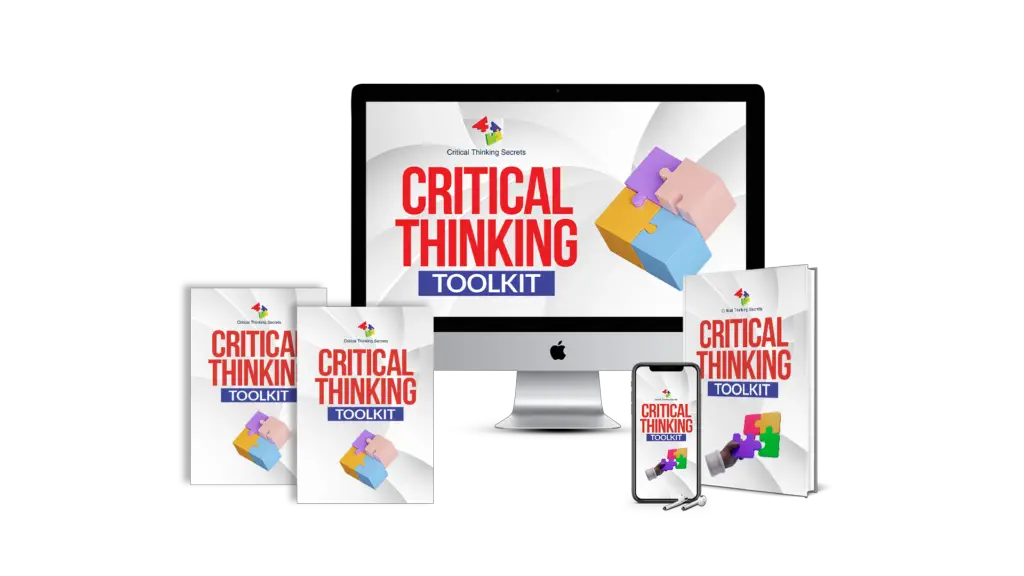Strategic analysis plays a vital role in the success of a business. This process involves assessing a company’s internal and external environment, evaluating current strategies, and generating the most effective strategic approaches. By understanding an organization’s vision, mission, and values, strategists can help businesses navigate the complex landscape of decision-making and growth. Harvard Business Review emphasizes the importance of routine exercises to examine and synthesize trends in our day-to-day work.
Intuitive thinking, on the other hand, is an essential component of the decision-making process that relies on the ability to sense or perceive information without thorough knowledge or evidence. This type of thinking helps individuals understand reality in the moment, without the need for logic or analysis. According to SlideShare, intuitive thinking should be considered as part of one’s final decision-making process.
Combining strategic analysis with intuitive thinking can lead to a more comprehensive and effective decision-making approach in the business world. By utilizing both analytical and intuitive thinking, individuals can balance data-driven insights with their gut feelings to make the best decisions for different situations. Understanding the value of these two strategies can ultimately improve the overall workflow and success of an organization.
Strategic Analysis and Intuitive Thinking
The Importance of Both Approaches
Strategic analysis and intuitive thinking are two complementary skills that are essential in decision making and problem-solving processes. By understanding and utilizing both approaches, individuals and organizations can effectively navigate complex environments and make well-informed decisions.
Strategic analysis refers to the process of examining an organization’s surroundings and resources in order to formulate a strategy that meets desired objectives and improves performance. This approach involves the use of rationality and reason supported by data and evidence. It helps decision-makers understand the external and internal factors that could affect the organization’s success and develop strategies based on this knowledge.
On the other hand, intuitive thinking is the ability to sense or perceive truth without thorough knowledge or proof. It is based on an individual’s hunches and gut feelings, and can be crucial when forming fresh ideas or making quick decisions in rapidly changing scenarios.
Intuitive thinking helps decision-makers understand the situation within the present moment, without relying on logic or analysis. It allows for creative and flexible thinking, enabling individuals to adapt to unforeseen challenges and leverage opportunities effectively.
Both strategic analysis and intuitive thinking are valuable tools in decision-making processes, offering unique benefits and insights.
- Strategic analysis provides a structured framework for understanding complex situations, backed by evidence and data.
- Intuitive thinking allows for the exploration of innovative ideas and the ability to rapidly adapt to changing circumstances.
By combining these approaches, decision-makers can harness the strengths of each method, leading to more balanced and well-rounded decisions. This includes understanding and considering both the hard data and evidence, as well as trusting instincts and intuition. In turn, this can lead to improved performance and successful outcomes for both individuals and organizations.
Key Components of Strategic Analysis
Data and Trends
One of the most important components of strategic analysis is understanding a company’s internal and external environment, which involves collecting, analyzing, and evaluating data. This provides an understanding of the trends affecting the organization in order to make informed decisions.
- Internal data includes information on the company’s resources, capabilities, financial position, and organizational structure. This helps identify internal strengths and weaknesses.
- External data consists of information about the industry, competitors, market trends, and the broader economic climate. This helps identify external opportunities and threats.
By understanding both internal and external data and trends, it is possible to create a comprehensive strategic analysis, allowing for the development of effective strategies that align with the organization’s goals.
SWOT Analysis
SWOT Analysis is a popular and effective tool to identify and evaluate the key components of strategic analysis. It stands for Strengths, Weaknesses, Opportunities, and Threats:
- Strengths: These are the internal characteristics that give the organization a competitive advantage. Examples may include strong brand reputation, skilled workforce, and established market position.
- Weaknesses: These are the internal characteristics that put the organization at a disadvantage compared to its competitors. Examples may include outdated technology, a poorly designed product, or a weak management team.
| Strengths | Weaknesses |
|---|---|
| Strong brand reputation | Outdated technology |
| Skilled workforce | Weak management team |
- Opportunities: These are external factors that the organization can exploit or capitalize on to grow or improve its market position. Examples may include new market segments, emerging technologies, or favorable regulatory changes.
- Threats: These are external factors that could negatively impact the organization, such as increased competition, economic downturns, or regulatory changes that hinder business.
| Opportunities | Threats |
|---|---|
| New market segments | Increased competition |
| Emerging technologies | Economic downturns |
By conducting a SWOT analysis, an organization can effectively evaluate its internal and external environment, which helps in the development and implementation of successful strategies to achieve its objectives.
Intuitive Thinking in Practice
Relying on Experience and Feelings
Intuitive thinking is the process of making decisions based on one’s feelings, experiences, and emotions, instead of relying solely on factual information and data. It allows individuals to make quick judgments and decisions, even in the absence of complete information. When relying on experience and feelings, individuals often draw upon their past experiences and the emotional responses associated with them. This helps them to quickly perceive patterns and connections that might be less apparent through a purely analytical approach.
Intuition also involves recognizing the value of emotions and trusting their guidance in decision-making. For example, feelings of excitement or apprehension can signal that a particular course of action may be more or less beneficial, respectively. Emotions can act as helpful indicators of potential outcomes, especially when used in conjunction with logical analysis.
Quick Decisions and Confidence
In many situations, time is of the essence, and there’s not always the luxury of conducting extensive research and analysis. Intuitive thinking enables individuals to make quick decisions by quickly processing information based on their instincts and past experiences. This fast decision-making can be especially valuable in high-pressure circumstances or in situations with limited information.
Confidence is an essential element of intuitive thinking. Trusting one’s gut feelings and instinctual responses requires a level of self-assurance and faith in one’s abilities. This confidence stems from recognizing the value of both reason and feelings, and understanding that the combination of these cognitive processes can produce well-rounded and informed decisions.
Intuitive thinking is not a replacement for strategic analysis and logical reasoning, but rather a complementary process that can offer valuable insights and aid in decision-making. By leveraging the strengths of both rational and intuitive thinking, individuals can make more informed, confident, and timely decisions.
Critical Thinking Toolkit
This comprehensive toolkit is designed to help you:
– Break free from cognitive traps.
– Approach problems systematically and strategically.
– Make decisions with clarity and confidence.
Packed with ebooks, audiobooks, practical guides, interactive checklists, and fun quizzes
Strategic Thinking Skills and Opportunities
Innovation and Networks
Strategic thinking is essential for fostering innovation and leveraging networks within an organization. It involves the ability to think critically, identify opportunities, and develop a clear plan of action. Many times, strategic thinking leads to novel ideas and fresh perspectives that can drive growth and sustain competitive advantage in the market.
Innovation stems from a well-developed strategic thinking process, where employees at all levels continually scan for new ways to contribute to their organization’s success. This includes tapping into global trends, detecting shifts in industries, and being proactive in brainstorming solutions.
Networks benefit from strategic thinking as well. It allows professionals to build strong connections, share knowledge, and collaborate on projects that have potential for growth. By incorporating strategic analysis and intuitive thinking, organizations can adopt a more strategic mindset, crucial for maximizing the potential of their internal and external networks.
Feedback and Learning
Feedback is another critical component of strategic thinking. By actively seeking input from others, individuals and organizations can gather insights that shape their decision-making process. Feedback can come in many forms, including performance evaluations, customer surveys, or informal conversations among colleagues.
Learning from feedback not only refines one’s strategic thinking skills but also helps identify possible blind spots and areas for improvement. By embracing a growth mindset, employees can refine their thought process, improve their strategic thinking skills, and adapt to evolving market dynamics.
Incorporating strategic thinking in everyday tasks, like reflecting on a project’s outcomes or analyzing customer feedback, encourages continuous learning and professional growth. By fostering an organizational culture that values strategic thinking and learning, companies can better prepare themselves for the challenges and opportunities that lie ahead.
Strategic Planning and Implementation
Mission Statements and Values
Strategic planning begins with the development of a clear mission statement and a set of values that will guide the organization. A mission statement defines the organization’s purpose, its reason for existing, and its unique role in the market. The values, on the other hand, outline the principles and beliefs that inform the actions and decisions made within the organization.
Goals
An integral part of the strategic planning process involves setting long-term goals for the organization. These goals are overarching targets that will guide the company’s direction in the coming years. To set effective goals, leaders should apply strategic thinking which implies taking into account changes in the external environment, such as competition or technological advancements, as well as the organization’s internal capabilities.
Objectives
Objectives are the specific, measurable steps that the organization will take to achieve its long-term goals. These are usually short-term and have clear timelines for completion. When setting objectives, strategic planning concerns analysis to ensure that they are feasible, achievable, and consistent with the company’s mission, values, and resources.
Measuring Effectiveness
To ensure the successful implementation of the strategic plan, leaders should establish a structure for measuring the effectiveness of their strategies and objectives. This may include setting up key performance indicators (KPIs), regular progress reports, and feedback loops that enable ongoing communication and continuous improvement.
Implementing strategic plans necessitates clear communication of the mission, values, goals, and objectives across the organization. By involving employees at all levels, fostering a culture of strategic thinking, and regularly measuring effectiveness, organizations increase their chances of achieving their goals and fulfilling their mission.
Critical and Analytical Thinking Vs. Intuitive Thinking
Reasoning, Rationality, and Emotions
Critical and analytical thinking involve using reasoning and rationality to assess and evaluate information, arguments, and concepts. It is a logical and systematic approach that considers evidence, identifying patterns, and drawing sound conclusions based on facts and data ^(1^). This type of thinking is typically slower and more deliberate, as it fully scrutinizes all variables and options.
On the other hand, intuitive thinking is an unconscious process, relying on emotions, gut feelings, and personal experience to make decisions and interpret situations^(2). It is quicker and more spontaneous than analytical thinking, though it may be less reliable due to the absence of evidence or proof.
Some key differences between the two types of thinking:
| Critical and Analytical ThinkingIntuitive Thinking | |
|---|---|
| Slow, deliberate | Fast, spontaneous |
| Based on evidence, logic | Based on emotions, personal experience |
| More reliable, less prone to bias | Less reliable, more prone to bias |
Balancing the Perspectives
It is essential to recognize that both critical and analytical thinking and intuitive thinking have their respective benefits and drawbacks. For example, analytical thinking is critical in complex problem-solving situations, scientific research, and business planning. It helps minimize biases and errors that could hinder decision-making.
However, intuitive thinking can be effective in circumstances where immediate action or a rapid response is necessary. It allows us to detect patterns and make predictions in social interactions and high-pressure environments ^(3).
Incorporating both perspectives can lead to more informed decision-making and a broader understanding of different situations. The key is to learn when each type of thinking is most applicable and beneficial, utilizing them in a complementary manner.
Factors Influencing the Balance of Strategic Analysis and Intuitive Thinking
Organizational Culture
Organizational culture plays a significant role in determining the balance between strategic analysis and intuitive thinking. A company with a culture that encourages open communication and collaboration may lean more towards intuitive thinking, whereas a company that emphasizes data-driven decision-making and a structured approach to problem-solving may prioritize strategic analysis. It is important for an organization to be adaptable and integrate both approaches to efficiently deal with various situations.
The company’s mission statement can also indicate the organization’s preference for strategic analysis or intuitive thinking. A mission statement focused on innovation and creativity might suggest a greater emphasis on intuition, while one centered on efficiency and measurable results could point toward a preference for strategic analysis.
Industry and External Environment
The industry and external environment can also impact the balance between strategic analysis and intuitive thinking. For instance, industries that are rapidly evolving and constantly changing, such as technology or fashion, may require a higher level of intuitive thinking to stay ahead of trends and adapt quickly to new opportunities. Conversely, industries that are more stable and regulated, like utilities or healthcare, might benefit from greater emphasis on strategic analysis to ensure compliance and risk mitigation.
Competitive pressure within the industry can also influence the balance. A highly competitive environment may push companies to rely more on intuition and quick decision-making to seize opportunities and stay ahead of the competition. On the other hand, industries with less competition might afford companies the time and space to conduct thorough strategic analyses.
The external environment, including factors such as societal values, government regulations, and broader economic trends, can also affect the balance between strategic analysis and intuitive thinking. For example, a company operating in a society that values innovation and risk-taking may be more inclined to prioritize intuitive thinking, while a company in a heavily regulated industry may focus more on strategic analysis to navigate complex compliance requirements.
Overall, organizations should recognize the various factors influencing the balance between strategic analysis and intuitive thinking and assess how these factors affect their unique contexts. By doing so, they can strike the optimal balance and make more effective decisions to achieve their goals.
Challenges and Obstacles in Applying Strategic Analysis and Intuitive Thinking
Applying strategic analysis and intuitive thinking can help improve decision-making, but there are a number of challenges and obstacles that need to be overcome.
One challenge is balancing rationality and intuition in decision-making processes. Strategic thinking requires using data, facts, and logical reasoning, whereas intuitive thinking relies more on gut feelings and personal experience. Finding the right balance between the two methods is essential for effective decision-making but can be difficult to achieve.
One of the potential obstacles is the over-reliance on certain strategic thinking skills. Some people might be more focused on building their analytical abilities, while others may prioritize creativity and foresight. Emphasizing only specific strategic thinking skills can lead to limited outcomes.
Additionally, various external factors, such as threats and other obstacles, can hamper the effectiveness of strategic analysis and intuitive thinking. For example, unpredictable market conditions or technological advancements can quickly render a well-thought-out strategy obsolete.
To overcome these challenges and obstacles, consider the following approaches:
- Proactively identify external threats: Keeping an eye on external factors, such as competitive landscape, technological advancements, and market trends, can help to anticipate potential threats and adapt strategies accordingly.
- Cultivate diverse strategic thinking skills: To ensure comprehensive decision-making, develop a wide range of skills, including analytical, creative, and intuitive thinking abilities.
- Encourage collaboration and open communication: Foster a culture of teamwork and open communication in the organization to facilitate the exchange of ideas and perspectives, leading to improved decision-making.
- Regularly reevaluate strategies: Continually reevaluating strategies and adjusting them as needed ensures that they remain relevant and effective despite ongoing changes in the external environment.
By addressing these challenges and obstacles proactively, organizations can enhance their strategic analysis and intuitive thinking capabilities, leading to improved decision-making and better overall performance.
Conclusion
Strategic analysis and intuitive thinking are both essential aspects of decision making for unlocking success in both organizational and individual contexts. With a focus on utilizing rational processes, strategic analysis reveals valuable insights that contribute to the effectiveness of a plan. Meanwhile, intuitive thinking complements this approach, drawing upon an individual’s gut feelings and unconscious knowledge to make swift, informed decisions.
Promotion of a culture that embraces both strategic analysis and intuitive thinking can lead to more innovative problem-solving within an organization. By fostering curiosity and encouraging individuals to synthesize information, organizations can create an adaptable and resilient workforce capable of navigating complex challenges with confidence.
In summary, striking a balance between analytical and intuitive thought processes is beneficial for reaching successful outcomes while maintaining adaptability and resilience. By harnessing the power of both approaches, individuals and organizations can achieve their desired objectives with clarity and effectiveness, demonstrating the importance of strategic analysis and intuitive thinking in reaching success.






